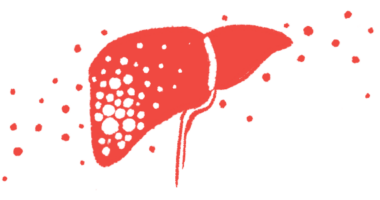Premenstrual pain, brain swelling leads to AIP diagnosis: Case report
Woman, 20, previously diagnosed with premenstrual syndrome, gastroenteritis

A woman with premenstrual pain and a brain condition called posterior reversible encephalopathy syndrome (PRES) was eventually diagnosed with acute intermittent porphyria (AIP), as described in a recent case report.
“In patients with AIP and PRES, seizures are probably the most noticeable nervous system dysfunction during acute attacks,” the researchers wrote in the study, “Premenstrual abdominal pain and posterior reversible encephalopathy syndrome in a woman with acute intermittent porphyria: A case report,” which was published in the Asian Journal of Surgery.
AIP is the most common form of acute porphyria — a group of metabolic disorders caused by an enzymatic defect in the production of heme, a molecule that enables red blood cells to transport oxygen throughout the body.
Like other types of acute porphyria, AIP symptoms include abdominal pain, as well as neurological dysfunction, which can manifest in the form of seizures, confusion, and altered mental status.
PRES is a rare condition marked by swelling near the back of the brain. It can cause seizures, headaches, visual disturbances, or psychiatric problems. Known underlying causes include very high blood pressure, kidney failure, severe infections, certain medications, and some autoimmune diseases.
Woman, 20, hospitalized after 3 years of recurrent symptoms
In this report, researchers at the Affiliated Hospital of Jining Medical University in China described the case of a 20-year-old woman experiencing recurrent premenstrual abdominal pain and PRES and who was eventually diagnosed with AIP.
The woman was hospitalized after reporting she had been having severe premenstrual abdominal pain, abdominal swelling (distension), and vomiting for more than three years. At that time, she received a diagnosis of premenstrual syndrome and acute gastroenteritis, or inflammation in the gut.
While in the hospital, however, she developed headaches, sudden but painless loss of vision in both eyes, and generalized tonic-clonic seizures marked by loss of consciousness and violent muscle contractions.
An electroencephalogram, a test that measures the brain’s electrical activity, showed signs of neurological dysfunction, but without any specific patterns associated with epilepsy.
MRI scans detected mild local swelling near the back of both sides of the brain. Even so, analysis of her cerebrospinal fluid — the liquid surrounding the brain and spinal cord — was normal, ruling out general inflammation of the brain (encephalitis) as a possible cause.
Her recurrent abdominal pain, seizures, painless vision loss, and headaches led physicians to suspect AIP. They then found that her urine turned dark and red after being exposed to sunlight, a sign of porphyria. Genetic testing finally confirmed the AIP diagnosis.
She received a glucose infusion and was put on a high-carbohydrate diet, a regimen to decrease heme production and reduce the production of heme precursors. She responded well to treatment and returned to school.
“AIP remains a great challenge to make a correct diagnosis in a timely manner,” the researchers wrote.







